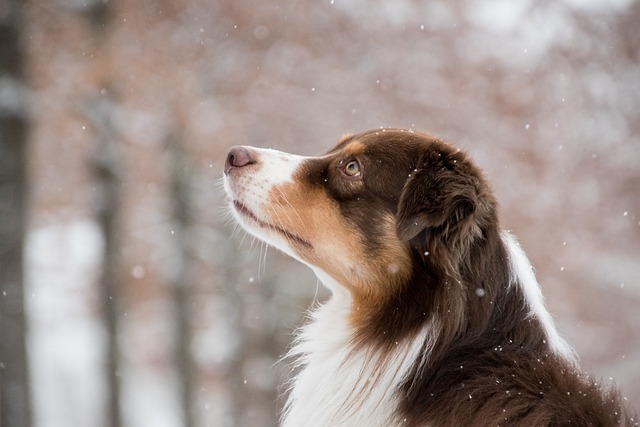This discussion provides an overview of the latest advancements in weatherproofing technology, particularly as applied to heated dog houses, which are designed to ensure pet comfort and safety in a variety of climates. It emphasizes the importance of high-performance insulation for maintaining stable temperatures, the integration of smart ventilation systems for air quality control, and the use of durable materials that withstand harsh environmental conditions. Advanced designs incorporate energy-efficient heating systems, often powered by solar panels, to reduce energy consumption while providing warmth. The section also presents a case study of a specific heated dog house model, highlighting its robust construction, thermal efficiency, and eco-friendly features, which collectively enhance the living environment for pets and demonstrate the positive outcomes of thoughtful design and innovation in pet habitats.
Outdoor structures, from residential to commercial, must withstand the relentless barrage of weather conditions. A heated dog house epitomizes the essence of resilient design, where durability and comfort converge. This article delves into the critical aspects of weatherproof design, focusing on materials that endure, the integration of advanced technologies, and the balance between insulation and ventilation to create a harmonious environment for both human-made structures and our beloved pets, particularly in a heated dog house. Join us as we explore the key features and best practices that ensure these outdoor sanctuaries remain unscathed by the elements, all year round.
Understanding Weatherproof Design: The Importance for Outdoor Structures

Incorporating weatherproof design into outdoor structures is a pivotal aspect of ensuring longevity and functionality, especially when it comes to structures like a heated dog house. These designs take into account various climatic conditions, from heavy rains to harsh winds, ensuring that the structure can withstand environmental stressors. The materials used in such designs often include water-resistant or waterproof fabrics, corrosion-resistant metals, and insulation that maintains warmth without compromising on weather resistance. For instance, a heated dog house must be impervious to moisture to prevent electrical hazards and maintain the comfort of the canine occupant. The design should also facilitate proper drainage and air circulation to mitigate condensation, which could otherwise lead to mold growth or discomfort. Additionally, strategic placement of heating elements within the insulated space ensures that the interior remains cozy regardless of the outside temperature. Understanding weatherproof design principles is crucial for creating outdoor structures that not only protect their contents but also maintain their integrity over time, making them a wise investment for pet owners and structure users alike. The integration of smart technology, such as temperature sensors and automated climate control systems, further enhances the functionality of these structures by providing an environment that adapts to the needs of its users, ensuring comfort and safety in all weather conditions.
Materials that Withstand the Elements: A Guide to Durable Construction

When constructing buildings or structures intended to withstand the capricious whims of nature, the choice of materials is paramount. Architects and builders often turn to innovative and robust materials that can endure harsh environmental conditions, ensuring longevity and safety. Among these materials are advanced composites, which offer superior strength-to-weight ratios and resistance to corrosion, making them ideal for coastal structures or industrial applications. Another material gaining popularity is stainless steel, known for its durability and resistance to rust and corrosion, making it a reliable choice for both indoor and outdoor applications. For example, a heated dog house made with these materials can provide comfort and safety for pets even in the most severe weather conditions.
In addition to traditional building materials like concrete and brick, there are modern alternatives such as fibre-reinforced polymers (FRPs) that provide exceptional resistance to water, chemicals, and UV light. These materials are often used in applications where durability is critical, such as bridges, marinas, and even pet accommodations like the heated dog house mentioned earlier. Engineered wood products, such as laminated veneer lumber (LVL) and cross-laminated timber (CLT), offer high performance and sustainability, while still maintaining a warm aesthetic that is often desired in residential construction. These materials, when properly integrated into design, can enhance both the longevity and the appeal of a structure, ensuring it stands up to the elements year after year.
Heated Dog House: Ensuring Comfort and Safety for Pets in All Seasons

A heated dog house represents a pinnacle of pet care innovation, offering comfort and safety for dogs regardless of the weather conditions. These specially designed structures ensure that pets can remain at optimal temperatures during cold snaps, providing a cozy retreat that mimics a dog’s natural den. The heating elements are strategically placed to evenly distribute warmth while being equipped with thermostatic controls to prevent overheating and energy waste. This thoughtful design not only protects against the frosty bites of winter but also safeguards against the sweltering heat in summer, making a heated dog house a year-round solution for outdoor pets. The durability of these structures is paramount, with weatherproof materials that stand up to the elements, ensuring that the interior remains warm and inviting. Additionally, many models come with insulated floors and roofs, further enhancing the dog’s comfort and well-being, and are available in various sizes to accommodate different breeds. When selecting a heated dog house, consider factors such as size, insulation quality, heating system efficiency, and weather resistance to provide the best possible care for your canine companion.
Key Features of a Weatherproof Heated Dog House

When selecting a heated dog house, it’s crucial to consider features that ensure your canine companion remains comfortable and safe in various weather conditions. A high-quality heated dog house should boast an insulated design with double-wall construction for optimal heat retention. The heating element within the structure should be of durable material, capable of providing consistent warmth without posing a risk of overheating or fire. Additionally, a reliable thermostat is essential for regulating the temperature automatically, ensuring that your dog can stay cozy even when you’re not there. Ventilation is also a key factor; it allows for adequate air circulation to prevent condensation and humidity from building up inside, which could otherwise make the environment uncomfortable or damp.
Safety features are paramount in a heated dog house. The design should include a lockable door for security and to keep out unwanted creatures. Weatherproof materials such as powder-coated steel frames and durable, water-resistant fabrics for the roof and floor are essential to protect against the elements. A design that resists corrosion from snow, rain, and UV rays will extend the lifespan of the dog house. Lastly, ample space inside the house for your dog to move around comfortably is important, as well as a raised floor to keep your pet off the cold or wet ground. With these features in mind, your dog can enjoy a heated dog house that’s both a haven from harsh weather and a safe retreat year-round.
Designing for Extremes: Adapting Structures to Harsh Climates

Architectural design that withstands extreme weather conditions is a testament to human ingenuity, particularly in regions where climates are harsh and unforgiving. Designing for extremes involves more than mere fortification; it demands an intricate understanding of environmental factors and the materials best suited to counteract their effects. In areas beset by frigid temperatures, innovative solutions such as the integration of heating systems into structures, like a heated dog house, exemplify the necessary adaptations. These systems not only ensure the comfort of pets but also serve as a model for maintaining habitable conditions in human dwellings. The use of advanced insulation materials and thermal breaks in construction is paramount to safeguard against the permeation of cold air, reducing energy consumption and increasing the longevity of the building’s integrity. Similarly, roof designs optimized for snow load distribution are crucial in preventing structural failure due to accumulated snowfall. Such design considerations are essential for ensuring safety and comfort in environments where temperatures plummet, showcasing the importance of tailored architectural solutions in the face of extreme weatherproofing demands.
The Role of Insulation in Maintaining a Constant Temperature

In the realm of weatherproof design, insulation plays a pivotal role in regulating the internal temperature of structures, including heated dog houses. High-quality insulation materials are instrumental in creating a barrier against extreme temperatures, whether it’s the scorching heat of summer or the biting cold of winter. These materials work by slowing down the transfer of heat between the inside and outside, thus maintaining a stable environment for occupants. For instance, a heated dog house equipped with effective insulation can keep a pet comfortable even in harsh weather conditions. The choice of insulating material, such as foam, fiberglass, or spray polyurethane foam, is critical and depends on factors like R-value, which measures the material’s resistance to heat flow, and its compatibility with the structure’s design and intended use. Properly insulated spaces not only contribute to the longevity of the building but also significantly reduce energy consumption by minimizing the need for active heating or Cooling Systems. This aspect is particularly relevant in specialized applications like heated dog houses, where maintaining a constant temperature is essential for the well-being and health of pets.
Ventilation Systems: Balancing Heat and Humidity in Enclosed Spaces

In the realm of weatherproof design, maintaining a comfortable interior environment within enclosed spaces is paramount, especially in structures like heated dog houses where occupants are less mobile and more susceptible to extreme temperatures. Ventilation systems play a crucial role in this endeavor by regulating heat and humidity levels. These systems are designed to extract stale, warm air and infuse the space with fresh, cooler air, thereby mitigating the buildup of heat and humidity that can occur even in insulated environments. Advanced ventilation systems incorporate sensors and smart technology to respond dynamically to changing environmental conditions, ensuring optimal comfort for the dogs housed within. The integration of such systems is essential in regions with high temperatures or where a dog’s coat may exacerbate heat retention. Additionally, these systems contribute to the longevity of the structure by preventing moisture-related degradation that can occur when humidity levels remain too high over extended periods. By carefully balancing heat and humidity, heated dog houses equipped with these sophisticated ventilation systems provide a safer, healthier living environment for pets, even in challenging weather conditions.
Advanced Weatherproofing Technologies for Outdoor Structures

Innovations in weatherproofing outdoor structures have significantly advanced, particularly with the advent of sophisticated materials and technologies that cater to a range of environments. These advancements are not limited to human-centric designs; they extend to pet care as well, exemplified by the emergence of heated dog houses. These state-of-the-art canines’ retreats incorporate thermoregulating insulation and low-energy heating systems, ensuring pets remain comfortable even in suboptimal weather conditions. The integration of smart technology within these structures allows for remote monitoring and adjustment of the internal climate, providing a safe and cozy environment for pets. These heated dog houses exemplify the broader trend of intelligent weatherproofing solutions that are becoming increasingly commonplace in outdoor designs, from residential gardens to commercial spaces.
The integration of advanced weatherproofing technologies is a multifaceted approach that includes waterproof membranes, wind-resistant frameworks, and materials with high thermal retention properties. The goal is to create durable, sustainable, and resilient structures that can endure the rigors of various climates, while also being energy-efficient. For instance, the use of self-cleaning surfaces and photocatalytic paints not only enhances the aesthetics but also contributes to the longevity and maintenance-free nature of these outdoor structures. The application of such technologies in weatherproof design is a testament to human ingenuity in adapting our constructions to the elements, ensuring both functionality and durability in a changing climate.
Case Study: Successfully Implementing a Heated Dog House Design

In recent years, advancements in weatherproof design have led to innovative solutions that cater to the comfort and safety of pets. A prime example of this is the implementation of a heated dog house, which has proven to be a resounding success in extreme climates. This case study highlights a particular model of heated dog houses that was designed with durability and insulation as its core principles. Constructed with high-quality materials, including weather-resistant timber and double-layered walls filled with polyurethane foam for optimal heat retention, these structures are capable of maintaining a warm environment even in sub-zero temperatures. The inclusion of a low-wattage heating system ensures that the dogs can remain comfortable without the risk of overheating or fire hazards. Moreover, the design incorporates a solar panel array on the roof, which not only powers the heating element but also allows for ventilation and natural light to enter during daylight hours. This self-sustaining feature makes it an eco-friendly option that minimizes energy consumption while maximizing the dog’s well-being. The success of this heated dog house is evident in the positive feedback from pet owners and the visible comfort and health of the dogs living in these structures, even through the harshest winters. This case study underscores the importance of thoughtful design and innovation in creating pet habitats that provide safety, warmth, and comfort in various weather conditions.
